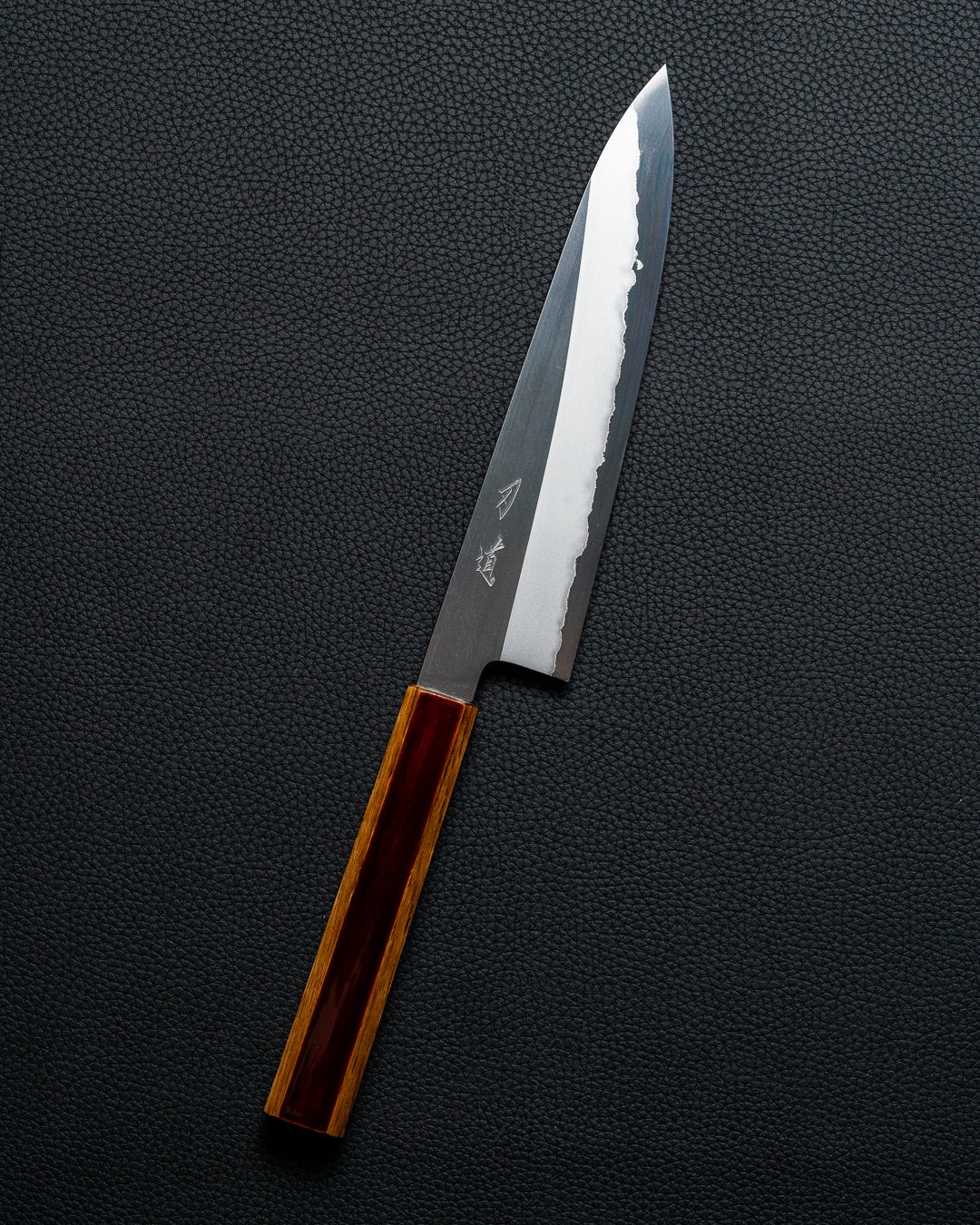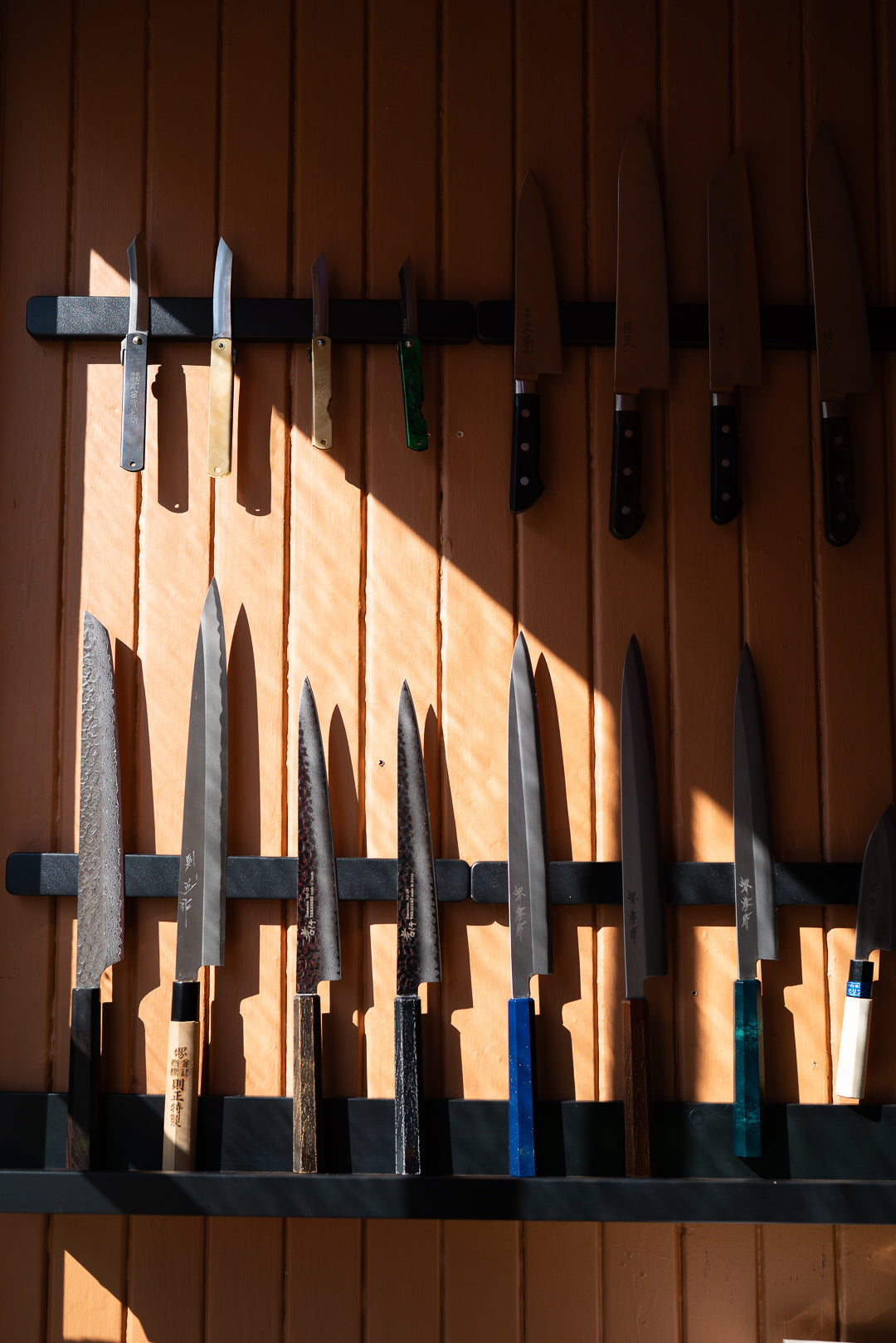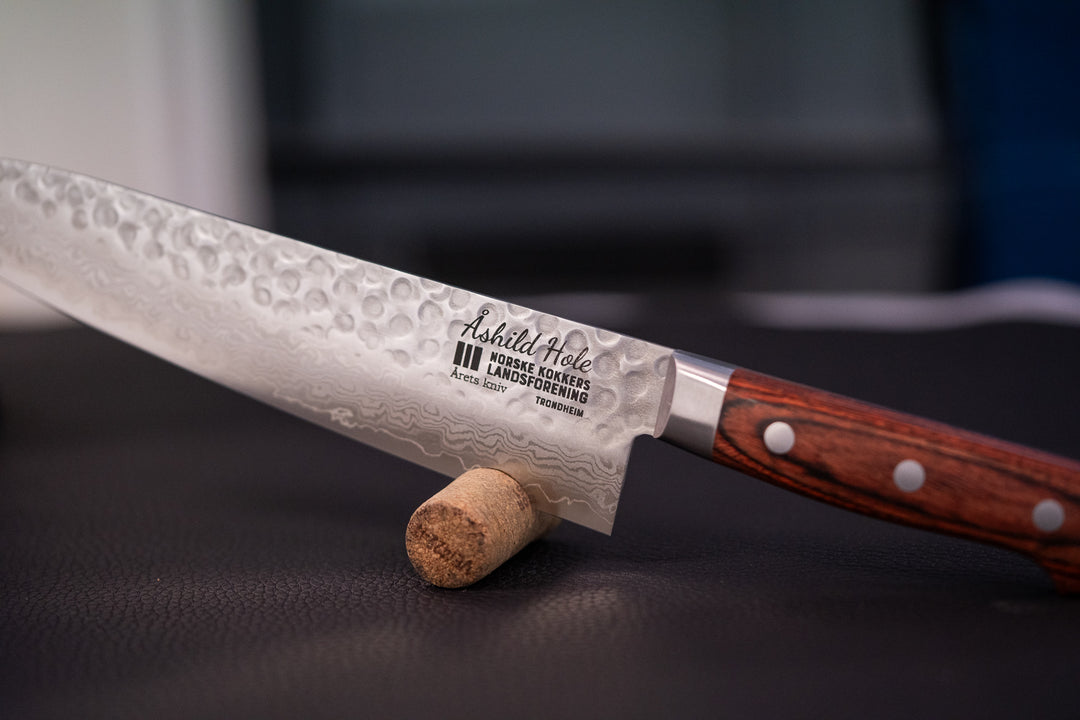Gyuto Explained: Everything You Need to Know About Japan's Versatile Kitchen Knife
In the Japanese knife world, there is a term that comes up often: Gyuto . But what does this word actually mean, and why is it so important?

Gyuto (牛刀) can be directly translated as "beef knife", and the name gives us a clue as to the knife's origins. Originally, the Gyuto was designed for cutting meat, especially beef. This knife design was developed with inspiration from Western chef's knives, such as the French or German chef's knife. But as with so much else in Japan, the craftsmen took this idea and perfected it into something uniquely Japanese.
A Gyuto is one of the most versatile kitchen knives you can own today. It has a narrower profile compared to Western chef's knives, and the blade has a slight curve that allows for precise chopping, slicing, and rolling movements. Typically, the length of the blade varies between 20 and 27 centimeters, which provides enough space to handle both large and small tasks in the kitchen.

What sets a Gyuto apart from other knives? First, the steel is often harder than what you find in European knives. This allows the blade to be sharpened to an incredibly sharp edge that lasts longer, but it also requires more care to avoid damage such as nicks or rust. Furthermore, the handle is often designed in a Japanese style, known as a wa handle , which is lighter and provides better control.

The Gyuto is not just a meat knife, as its name might suggest. It is great for cutting vegetables, filleting fish, and even for more precise tasks like chopping herbs. It simply acts as an all-round knife, and many professional chefs and enthusiasts consider it the most important knife in the kitchen.
So, the next time you hear someone mention a Gyuto, think of it as a Japanese master of versatility – a knife that combines Western functionality with Japanese craftsmanship at its best.
Hope this gives you a good understanding of what a Gyuto is!










Leave a comment